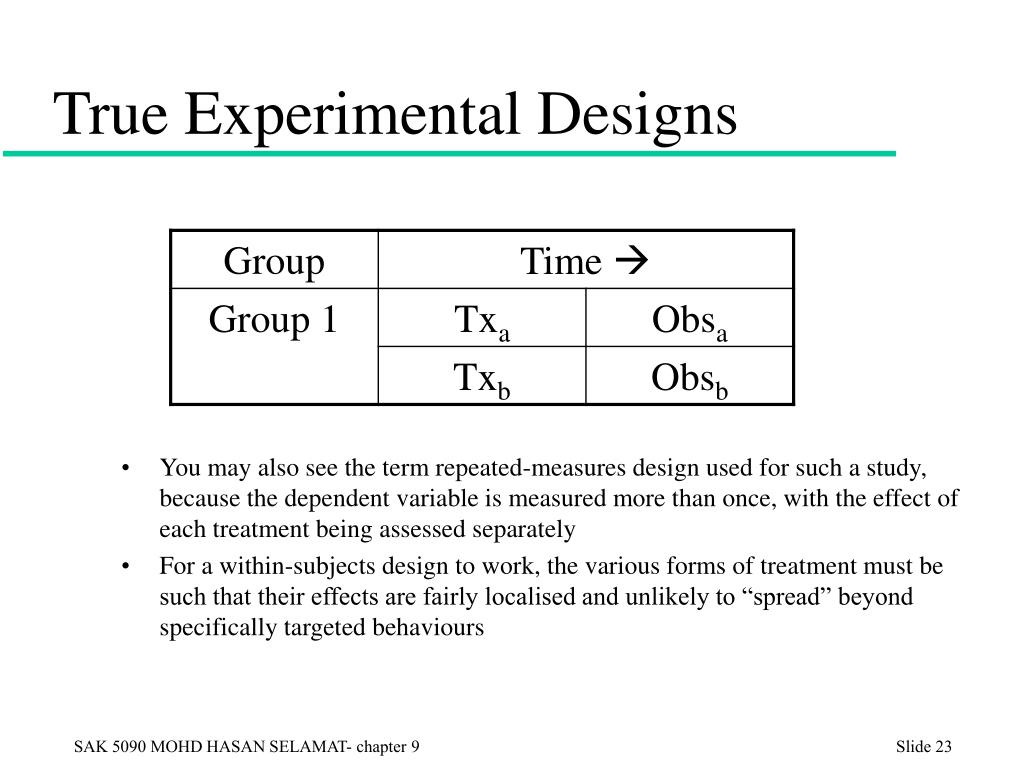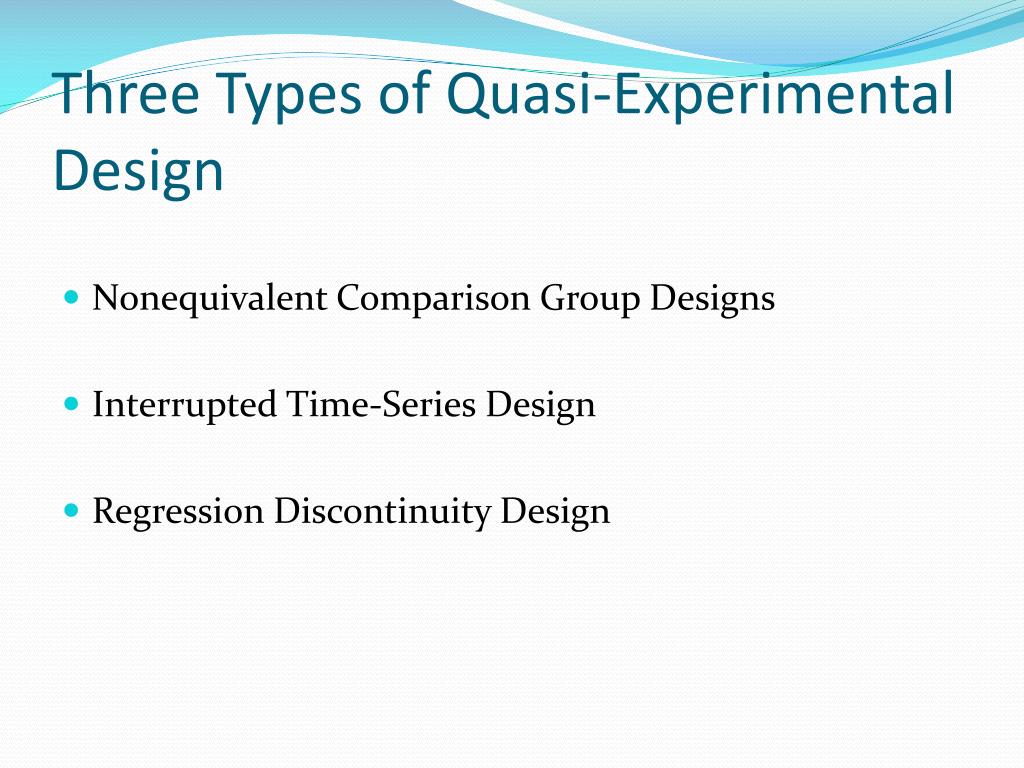Table Of Content

Each were randomly assigned to be asked either one of two versions of a question regarding the accident. A team of psychologists is interested in studying how mood affects altruistic behavior. They are undecided however, on how to put the research participants in a bad mood, so they try a few pilot studies out. She shows the plants to her colleagues and they all agree that further testing is needed under better controlled conditions. So, the doctor applies the treatment to two of their patients with the illness.After several weeks, the results seem to indicate that the treatment is not causing any change in the illness. The doctor concludes that there is no need to continue the treatment or conduct a larger study with a control condition.
When to use Experimental Research Design
Only one group of carefully selected subjects are considered in this research, making it a pre-experimental research design example. We will also notice that tests are only carried out at the end of the semester, and not at the beginning. Some examples of quasi-experimental research design include; the time series, no equivalent control group design, and the counterbalanced design.
Bayesian Designs
A good experimental design helps you ask the right questions (think critically), decide what to measure (come up with an idea), and figure out how to measure it (test it). It also helps you consider things that might mess up your results, like outside influences you hadn't thought of. This website is using a security service to protect itself from online attacks.
Sports Nutrition Bars Study
The control group is often a group that receives water or a placebo, or a group that receives the standard treatment. For example, in the aspirin study, the control group would receive a pill that looks the same as aspirin, but contains no active ingredient (a placebo). Data collection methods in experimental research are the different ways in which data can be collected for experimental research. They are used in different cases, depending on the type of research being carried out. Okay, so using the example above, notice that one of the groups did not receive treatment. This group is called a control group and acts as a baseline to see how a new treatment differs from those who don’t receive treatment.
What is the purpose of conducting true experimental research?
Field Experiments embrace the messiness of the real world, unlike laboratory experiments, where everything is controlled down to the smallest detail. Last but certainly not least, let's explore Field Experiments—the adventurers of the experimental design world. In terms of its applications, besides healthcare and medicine, Sequential Design is also popular in quality control in manufacturing, environmental monitoring, and financial modeling. In these areas, being able to make quick decisions based on incoming data can be a big advantage.
With the advent of computers and advanced statistical software, analyzing multiple variables at once became a lot easier, and Multivariate Design soared in popularity. If our lineup of research designs were like players on a basketball court, Multivariate Design would be the player dribbling, passing, and shooting all at once. This design doesn't just look at one or two things; it looks at several variables simultaneously to see how they interact and affect each other.
Explanatory Research – Types, Methods, Guide
The neat thing about this design is that it allows each participant to serve as their own control group. Instead of giving one type to one group and another type to a different group, you'd give both kinds to the same people but at different times. Imagine a study looking at how a new energy drink affects people's running speed. This way, you're really zeroing in on the effect of that energy drink, making the results more reliable. Since researchers aren't controlling variables, it's hard to rule out other explanations for what they observe. It's like hearing one side of a story—you get an idea of what happened, but it might not be the complete picture.
Impact of measurement noise, experimental design, and estimation methods on Modular Response Analysis based ... - Nature.com
Impact of measurement noise, experimental design, and estimation methods on Modular Response Analysis based ....
Posted: Thu, 01 Nov 2018 07:00:00 GMT [source]
Each group receives a different level of the treatment (e.g. no phone use, low phone use, high phone use). First, you may need to decide how widely to vary your independent variable. Experimental design means creating a set of procedures to systematically test a hypothesis. A good experimental design requires a strong understanding of the system you are studying.
Other options can be selected from the "Analyze Factorial Design" menu such as "Covariates...", "Prediction...", "Storage...", and "Weights...". Once all desired changes have been made, click "OK" to perform the analysis. All of the plots will pop-up on the screen and a text file of the results will be generated in the session file. Once the terms have been chosen, the next step is determining which graphs should be created. The types of graphs can be selected by clicking on "Graphs..." in the main "Analyze Factorial Design" menu. To have a total of 3 trials of each, the user should add 2 replicates in this menu.
Adaptive Designs are most often seen in clinical trials, particularly in the medical and pharmaceutical fields. This method is particularly useful in fast-paced or high-stakes situations, like developing a new vaccine in the middle of a pandemic. The ability to adapt can save both time and resources, and more importantly, it can save lives by getting effective treatments out faster.
Because this design produces a lot of data, and computers are the number crunchers that help make sense of it all. So, thanks to our silicon friends, researchers can study complicated questions like, "How do diet AND exercise together affect weight loss?" instead of looking at just one of those factors. Imagine juggling not just one, but multiple balls in the air—that's what researchers do in a factorial design. Similarly, in research, if you don't have a solid plan, you might get confusing or incorrect results.

This involves dividing participants into subgroups or blocks based on specific characteristics, such as age or gender, in order to reduce the risk of confounding variables. This involves systematically varying the order in which participants receive treatments or interventions in order to control for order effects. This design involves grouping participants within larger units, such as schools or households, and then randomly assigning these units to different treatment groups. Finally, you need to decide how you’ll collect data on your dependent variable outcomes. You should aim for reliable and valid measurements that minimise bias or error.

No comments:
Post a Comment